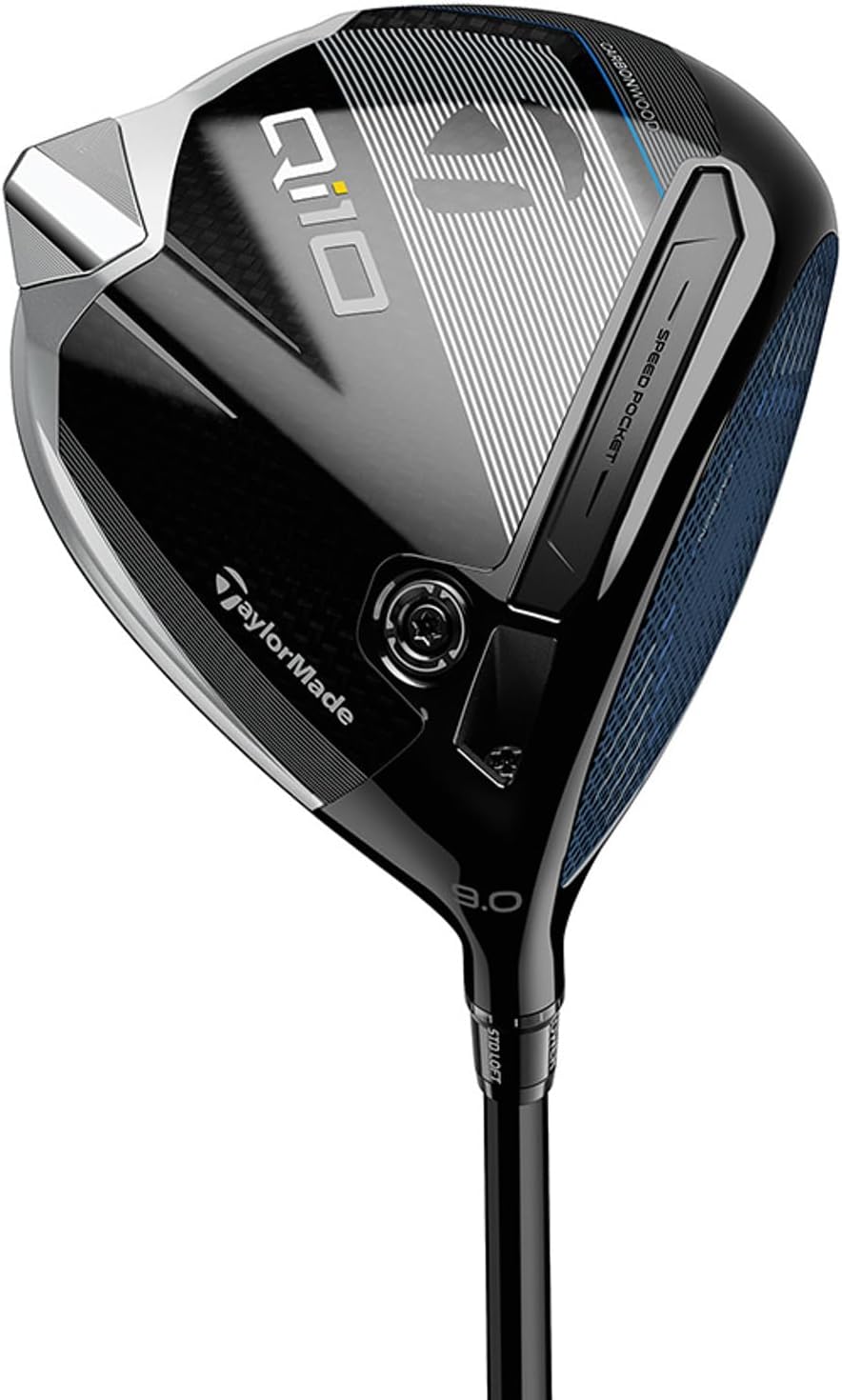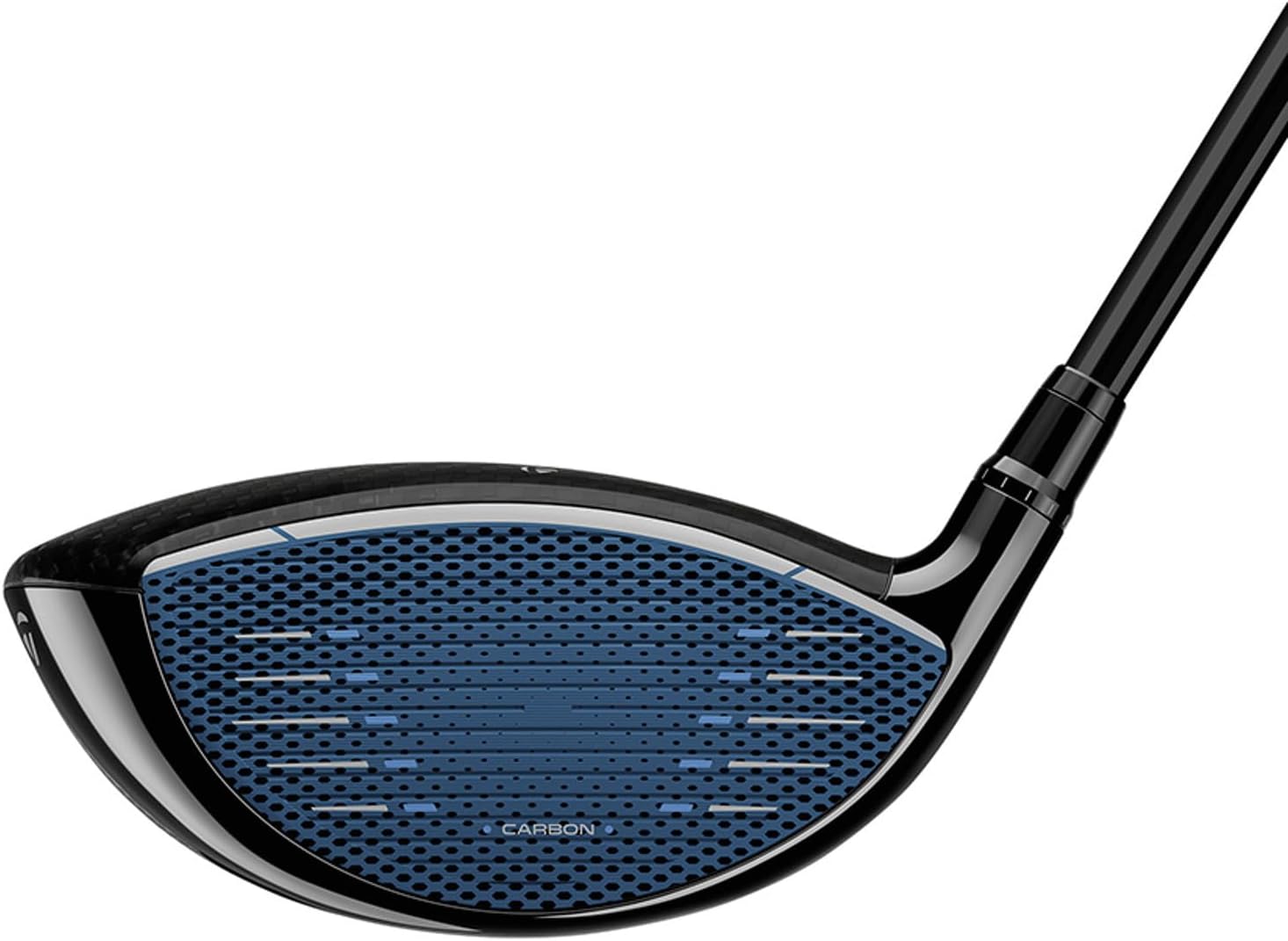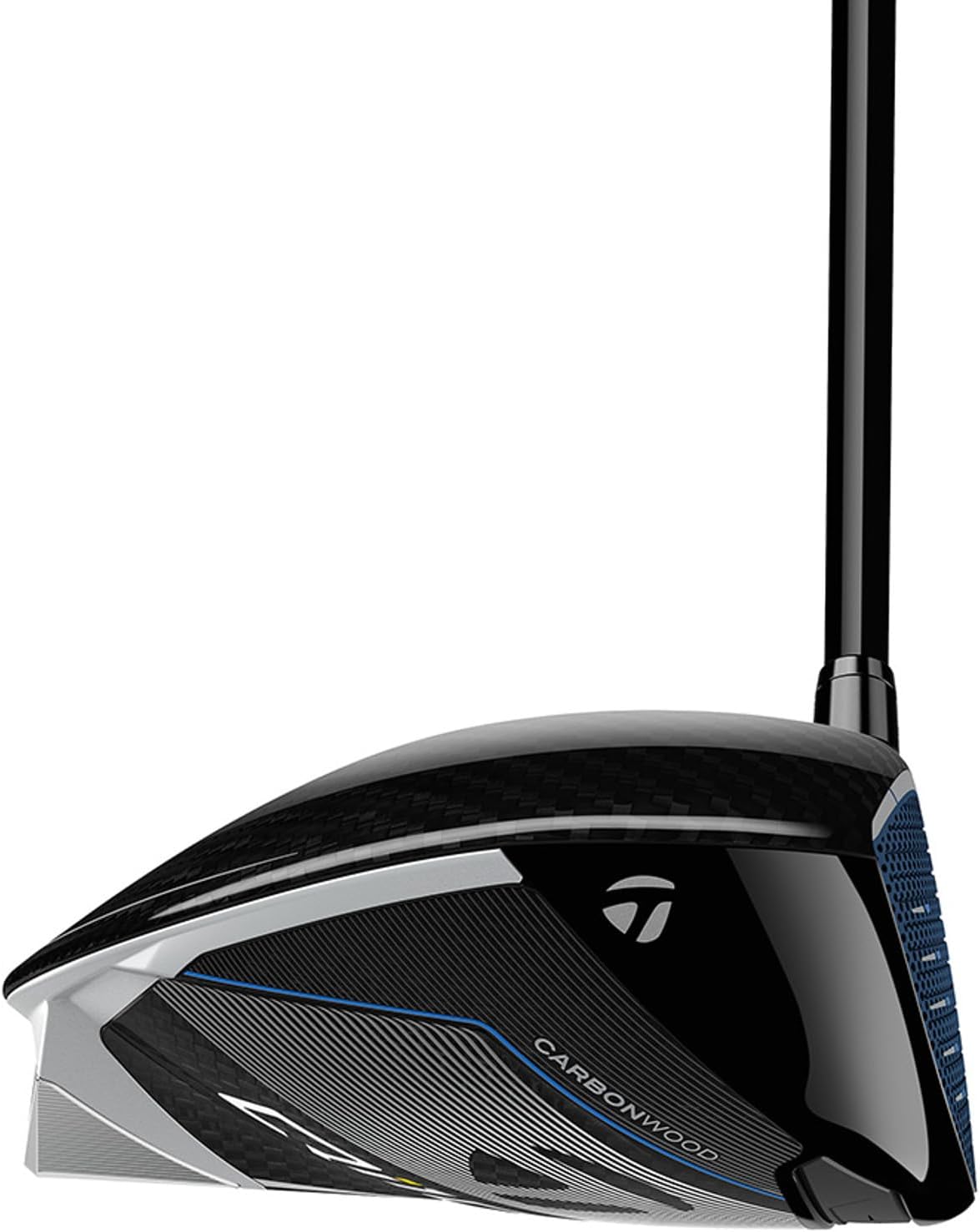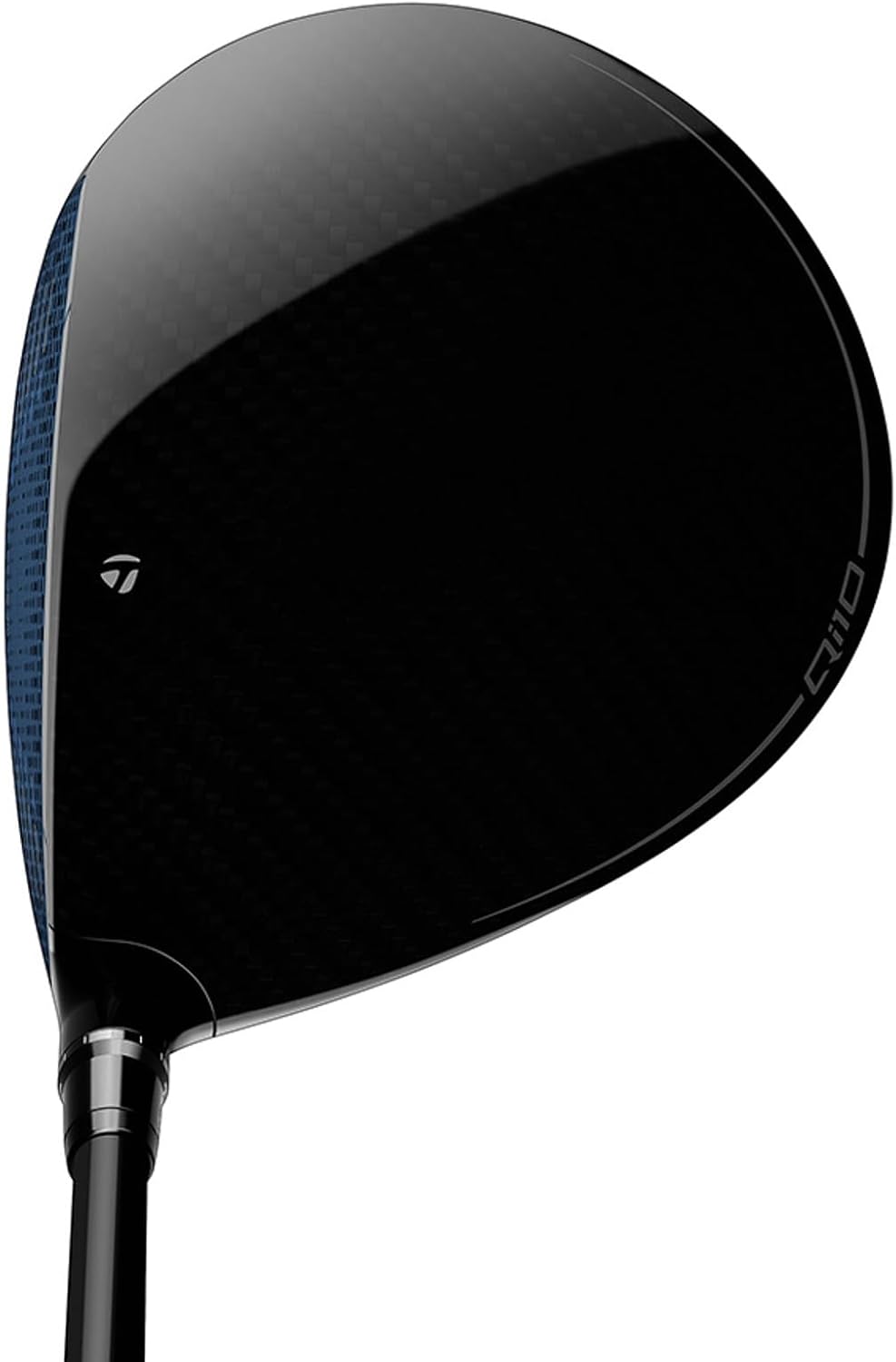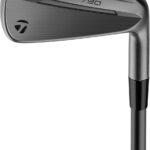? Are you thinking about upgrading your bag with the TaylorMade Golf Qi10 Driver, Tour-Proven Golf Club and wondering if it’s the right fit for your game?
Overview and first impressions
You’ll notice right away that the TaylorMade Golf Qi10 Driver, Tour-Proven Golf Club positions itself as a player-focused driver that also offers plenty of forgiveness. The headline tech—lower CG projection and higher MOI than Stealth 2—signals that TaylorMade aimed to balance distance with stability. In this section you’ll get a sense of what the driver looks like at address and the story behind the design.
What TaylorMade claims
TaylorMade advertises a lower center of gravity (CG) projection combined with a higher moment of inertia (MOI) than its Stealth 2 model, which is meant to produce more distance with enhanced forgiveness. You’ll see that the “Tour-Proven” label suggests feedback from high-level players contributed to the final setup and specifications.
First look and aesthetics
The Qi10 presents a sleek, neutral look that you won’t find distracting at address. You’ll appreciate the clean crown and subtle alignment aids that give confidence without screaming for attention.
TaylorMade Golf Qi10 Driver, Tour-Proven Golf Club
$399.99 Only 7 left in stock - order soon.
Specifications and tech breakdown
You’ll want to understand the key specs so you can decide if the Qi10 fits your swing and needs. Below is a clear table outlining the primary specifications and why they matter.
| Feature | Specification | Why it matters to you |
|---|---|---|
| Head Volume | Typically 460cc | Familiar size for most players, striking balance of confidence and meetability |
| Face Material | Forged titanium / advanced face design | Promotes ball speed, consistent distance across the face |
| CG Projection | Lower than Stealth 2 | Helps launch the ball higher with more forgiveness on mishits |
| MOI | Higher than Stealth 2 | Increases resistance to twisting for straighter results |
| Adjustability | Adjustable hosel, weight options | Lets you tune loft, lie and bias to fit your tendencies |
| Shaft Options | Multiple OEM shafts and aftermarket compatibility | Allows you to fine-tune feel, launch, and spin |
| Grip | Stock TaylorMade grip | Comfortable and reliable, but replaceable to personal preference |
| Tour-Proven | Yes | Means it was tested/used on tour for performance validation |
What the specs mean for your game
Lower CG projection combined with higher MOI suggests that TaylorMade wanted to give you a club that launches high and resists twisting—ideal if you prioritize carry distance and want mishits to behave. The adjustability lets you fine-tune trajectory and bias so the driver can be tailored to your swing.
Design and construction
You’ll be interested in how the Qi10 is built and why those choices influence performance. The construction choices reflect a mix of stability, forgiveness, and the modern emphasis on speed.
Head shape and aerodynamics
The 460cc head keeps a familiar silhouette that gives confidence at address while aerodynamic shaping aids clubhead speed during the swing. You’ll feel the head slice through the air smoothly, which can help you generate consistent speed without forcing changes to your swing.
Face design and materials
TaylorMade uses advanced face metallurgy tuned for ball speed and launch. The forged/engineered face profile seeks to maximize COR (coefficient of restitution) across the face so that even off-center strikes retain velocity. You’ll notice more ball speed near the heel and toe compared to older designs.
Crown, sole, and weight distribution
The crown is clean and low-contrast for focus, and the sole features strategic weight placement to move mass low and back—contributing to that lower CG projection. If you want a driver that assists both with higher launch and greater stability, these weight decisions work toward that goal.
Performance on the course
You’ll want to know how the Qi10 behaves on typical holes and under pressure. This section covers launch, spin, forgiveness, and shot-shaping tendencies.
Launch and trajectory
Because of the lower CG projection, you’ll see a higher initial launch compared to the Stealth 2, paired with an efficient spin profile. That combination generally produces more carry, which is valuable if you face soft fairways or hazards that require carry more than roll.
Ball speed and distance
The engineered face promotes strong ball speed, especially on well-struck shots. You’ll likely record similar or slightly improved ball speed compared to other premium drivers, and the higher MOI keeps your distance more consistent on off-center strikes.
Forgiveness and mishit performance
The higher MOI makes the Qi10 forgiving. When you miss the sweet spot, expect less loss of distance and reduced side spin, which helps keep wayward drives more playable. You’ll find fewer punishment penalties for shots slightly out toward the heel or toe.
Spin characteristics
You’ll get a spin profile designed to be stable—enough to hold the ball in the air but not so much that you lose rollout. Players who previously struggled with too-high spin will notice the Qi10’s balance helps keep carry consistent without ballooning.
Shot shaping and workability
Despite its focus on forgiveness, the Qi10 remains reasonably workable. You’ll be able to manipulate a draw or fade with intent, but the driver tends to favor straighter results, which is ideal if you want a confidence-inspiring miss.
Feel, sound, and feedback
You’ll care about how the driver feels through impact and what feedback it gives about strike quality. These sensory elements influence confidence and consistency.
Impact feel
The Qi10 provides a solid, modern feel—firm but not harsh. You’ll sense quality under the ball, and the face’s construction transmits whether you struck it well or poorly without being overly punishing.
Sound at contact
TaylorMade tuned the acoustics to deliver a satisfying thwack that isn’t too loud. You’ll enjoy an impact sound that matches the premium experience without being distracting or tinny.
Feedback for correction
Because the driver is tour-proven, you’ll receive reliable feedback on shot shape and strike location. It tells you when something is wrong in your swing while also forgiving enough to keep your round enjoyable.
Adjustability and fitting
You’ll want to customize the driver to suit loft, lie, and shot shape. This section explains the tuning options and why a proper fit matters.
Hosel and loft adjustments
The adjustable hosel allows you to tweak loft and lie to alter launch and shot shape. You’ll be able to increase loft for higher trajectories or lower it to reduce spin and promote roll.
Weighting options and bias adjustment
Depending on the exact model, you’ll find movable weights that help shift the center of gravity. If you struggle with a slice or a hook, you can reposition weight to encourage the desired draw or fade bias.
Why get fit
A proper fitting session ensures you get the shaft flex, loft setting, and weight configuration that matches your swing speed and release. You’ll save money and frustration by getting the right specs up front rather than guessing.
Who this driver is best for
You’ll want to match the driver’s strengths to your swing tendencies. The Qi10 favors players seeking a modern balance of speed, forgiveness, and controllability.
Mid- to low-handicap players
If you’re a better player who still wants forgiveness without sacrificing workability, this driver fits well. You’ll appreciate the tour-influenced feedback and the ability to shape shots when needed.
Players wanting more carry
If carry distance is a priority—especially on courses with hazards or soft landing areas—you’ll benefit from the Qi10’s lower CG projection that encourages higher launch and solid carry.
Players coming from older models
If you’re upgrading from a driver that lacks adjustability or modern face technology, you’ll notice meaningful gains in miss management and ball speed. The transition is particularly positive if you previously struggled with inconsistent distance.
Comparison with Stealth 2
You’ll want a clear comparison since the Qi10 is explicitly framed in relation to Stealth 2. Here’s how they stack up and what that means for your choice.
CG and MOI differences
The Qi10 projects a lower CG and higher MOI compared to Stealth 2. You’ll see this translate into higher launch and better forgiveness, while Stealth 2 may feel slightly more workable and lower spinning depending on configuration.
Performance trade-offs
If you prioritize absolute workability and slightly lower spin, Stealth 2 might be appealing. You’ll prefer the Qi10 if your priority is a stable, forgiving launch that maximizes carry.
A practical rule of thumb
If your misses cost you a lot of distance or direction, you’ll likely prefer the Qi10. If you consistently hit the center of the face and want to shape the ball aggressively, Stealth 2 remains a solid alternative.
Setup and shaft choices
You’ll want to match the right shaft and settings to your swing. The driver’s performance hinges heavily on the shaft and setup.
Stock shaft options
TaylorMade typically offers multiple stock shaft options covering different flexes and kick points. You’ll find options tailored for higher-launch players and those who prefer a flatter trajectory.
Aftermarket and custom shafts
If you’re serious about performance, you’ll consider aftermarket shafts to fine-tune feel and launch characteristics. Getting fit to identify the ideal shaft profile is highly recommended.
Grip and overall setup
The stock grip is durable and comfortable, but you’ll replace it quickly if you prefer a different size or texture. The overall setup should be balanced to your swing weight preference to maintain consistency.
On-course testing: how to get the most from the Qi10
You’ll get the best results by practicing a few key adjustments and understanding how the club responds. This section outlines practical steps to optimize performance.
Warm-up routine with the driver
Take time to loosen up with progressive swings, starting half-speed and building to full speed. You’ll find that rhythm and timing greatly influence launch and direction.
Ball position and tee height
For most players, placing the ball just inside your front heel and teeing slightly higher than the driver’s equator promotes an upward strike. You’ll achieve optimal launch and spin with a slightly higher tee height.
Adjust settings to match conditions
If the course is firm and you want more roll, lower the loft slightly and tighten down spin. You’ll want to increase loft and neutralize bias on soft courses where carry matters more.
Practice shaping intentionally
Spend time deliberately hitting draws and fades during practice to learn how the adjustable settings and your natural release interact. You’ll be able to make on-course adjustments with confidence after a few practice sessions.
Pros and cons
You’ll appreciate a concise list of strengths and weaknesses to weigh against your priorities.
Pros
- Higher MOI improves forgiveness on off-center hits, so you’ll keep more drives in play.
- Lower CG projection promotes higher launch and better carry for more distance.
- Tour-proven validation gives confidence in the driver’s real-world performance.
- Solid feel and pleasant sound at impact enhance overall enjoyment of play.
- Good adjustability provides customization for loft, lie, and bias.
Cons
- Slightly less workable for aggressive players who prioritize extreme shot shaping.
- Premium price means you’ll want to be sure it matches your needs before buying.
- Some players may prefer different aesthetic cues or a more aggressive look at address.
Maintenance and longevity
You’ll want to keep your driver performing well over multiple seasons. This section covers simple upkeep and things to watch for.
Routine care
Wipe the face, crown, and sole after every round to remove dirt and debris. You’ll preserve finish and consistent contact by keeping the face clean.
Headcover and storage
Use the headcover when not in use to avoid cosmetic damage. You’ll prevent dings and scratches by storing the club in a dry, temperate environment.
When to consider a replacement
If you notice significant face wear or a persistent loss of ball speed, you’ll want to get the club inspected or consider a replacement. Frequent high-speed play and abrasive conditions accelerate wear.
Price and value proposition
You’ll weigh cost against tangible performance and intended use. The Qi10 sits in premium driver territory, but its tech and forgiveness justify the price for many players.
Is it worth the cost?
If you care about consistent distance, forgiveness, and modern adjustability, you’ll likely find the Qi10 worth the investment—especially with a proper fitting. The tour influence and performance gains make it appealing compared to entry-level options.
Buying tips
Look for fitting packages or demo days that allow you to test shafts and settings. You’ll make a smarter purchase decision after walking away from a tenant session where you can compare results.
FAQ — quick answers to common questions
You’ll probably have a few specific questions; here are concise responses to common concerns.
Will this driver help my slice?
If your slice stems from low launch and high spin, the Qi10’s stability and adjustable weighting may help. You’ll want to set the bias toward draw and consider a fitting for the right loft and shaft.
Is the Qi10 suitable for beginners?
While the forgiveness helps, beginners might find more benefit from higher-launch, ultra-forgiving designs. You’ll still gain from its forgiveness, but consider whether a simpler model better matches your progression.
Can I switch shafts easily?
Yes. You’ll be able to install aftermarket shafts or upgrade to a custom shaft through a shop or fitter.
Does it perform better than Stealth 2 for most players?
It depends on priorities. You’ll notice more forgiveness and higher launch with the Qi10, while Stealth 2 may suit players wanting slightly lower spin and a different feel.
Final verdict
You’ll get a driver that balances modern distance technology with tour-proven feedback and improved forgiveness. If you want a club that helps you get the ball airborne, retain ball speed on off-center strikes, and keep drives straighter more often, the TaylorMade Golf Qi10 Driver, Tour-Proven Golf Club is an excellent choice—especially when selected through a proper fitting.
Who should pull the trigger
If you’re a mid- to low-handicap player who values consistency and carry distance, or if you’re upgrading from an older driver and want modern forgiveness without losing the ability to shape shots, you’ll be very satisfied. You’ll also find it compelling if you want a driver validated by tour players.
Final shopping tip
Try before you buy when possible, and invest in a fitting session. You’ll maximize the value of this premium driver by pairing it with the right shaft and settings for your swing.
Useful checklist before purchase
You’ll want to confirm a few items before committing to ensure the Qi10 works for you.
- Get fitted for shaft flex, weight, and loft.
- Compare on-course feel and ball-speed readings during a demo.
- Check adjustability options and understand how to change settings.
- Confirm return policies in case the fit isn’t right after a few rounds.
- Consider aftermarket shaft upgrades if you have specific launch or feel needs.
Closing thought
You’ll find the TaylorMade Golf Qi10 Driver, Tour-Proven Golf Club to be a high-performing, forgiving, and well-engineered option for players who want more consistent distance without sacrificing the ability to work the ball. With the right fit and a bit of practice, it can be a very impactful upgrade in your bag.
Disclosure: As an Amazon Associate, I earn from qualifying purchases.
